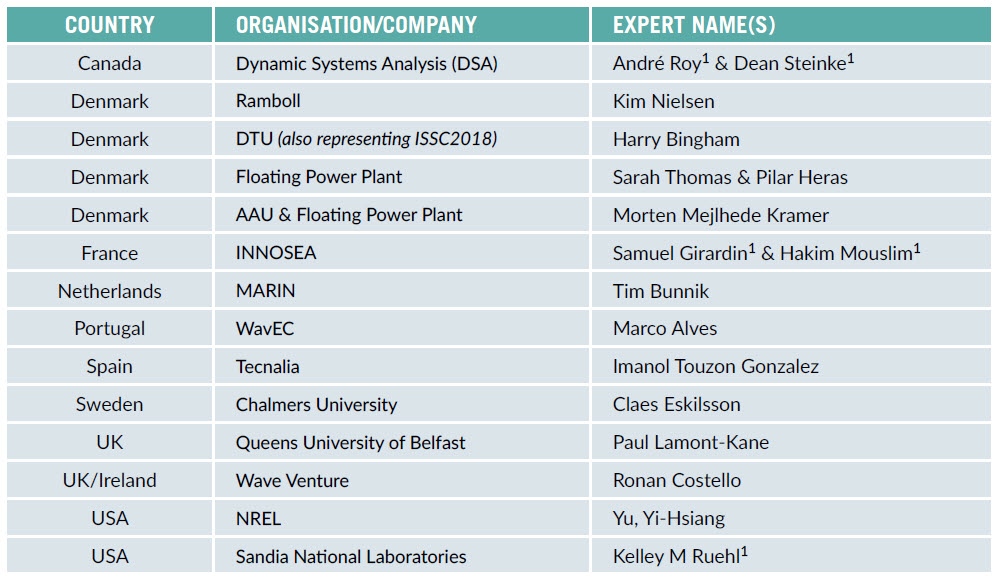Task 10 - Wave Energy Conversion Modelling Verification and Validation
|
MAJOR ACHIEVEMENTS
|
COORDINATOR
|
A first meeting was organised in September by the Danish member, Kim Nielsen, with a number of experts on numerical modelling. The objective of this workshop was to clarify the methodology for this task and prepare a document to be discussed at the ExCo meeting as well as identifying the countries willing to participate.
KICK-OFF WORKSHOP IN AMSTERDAM, SEPTEMBER 2016
A kick-off workshop was held on 15th September in Amsterdam with 18 participants (of which five were connected via internet), representing 10 countries and 16 organizations.
Participants of the kick-off workshop in Amsterdam 15th of September 2016

1 Via internet
It was agreed in the workshop to start with simple problems in order to establish effective co-operation between participants. Therefore, the group decided to analyse initially a 1-degree of freedom case of a floating sphere. The methodology is expected to be extended to include other geometries (e.g. cylinders, flap-type, a fixed OWC chamber, etc). These results will be presented and discussed in the next workshop expected to be held by mid-March 2017.
WORK PROGRAM
The proposed work plan includes the following activities:
Task 10.1 Define verification strategies and validation practice and metrics to be used, when comparing analytical, experimental and numerical results. The metrics should consider:
- Energy generated and power output;
- Device motions, position, velocity and acceleration;
- Measurement and simulation accuracies;
- Repeatability and reproducibility of measurements.
Task 10.2 Develop and identify suitable analytical models of wave energy converters.
Task 10.3 Identify a few base line cases for a first comparison between numerical simulations based on a limited suite of experimental test cases.
Task 10.4 Analyse the simulation results based on the metrics from Task 10.1 and develop comparison charts for validation purposes; compare and evaluate the numerical simulation results and evaluate the simulation results with respect to experimental data.
Task 10.5 Discuss the need, practicality and cost of obtaining additional experimental test data for model validation and making written recommendations to the ExCo and the technical community.
Task 10.6 Develop new experimental data sets for
- Innovative concepts and
- device archetypes that are lacking in currently available experimental data
Task 10. 7 Dissemination



